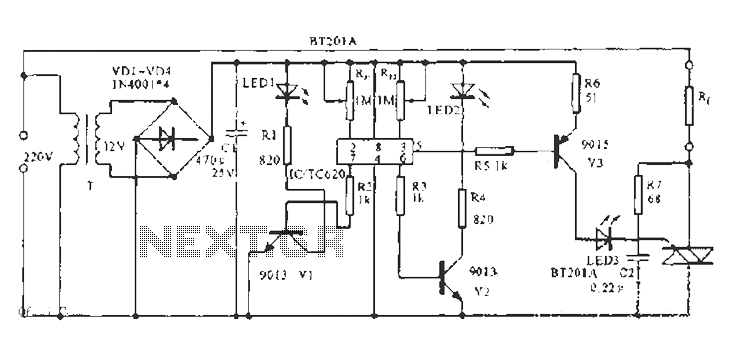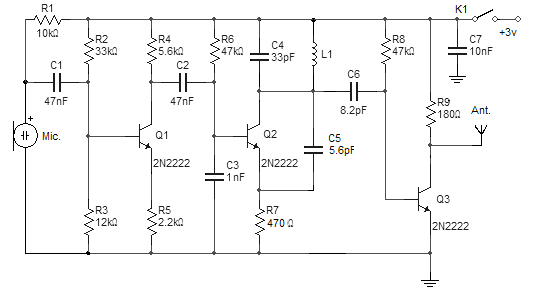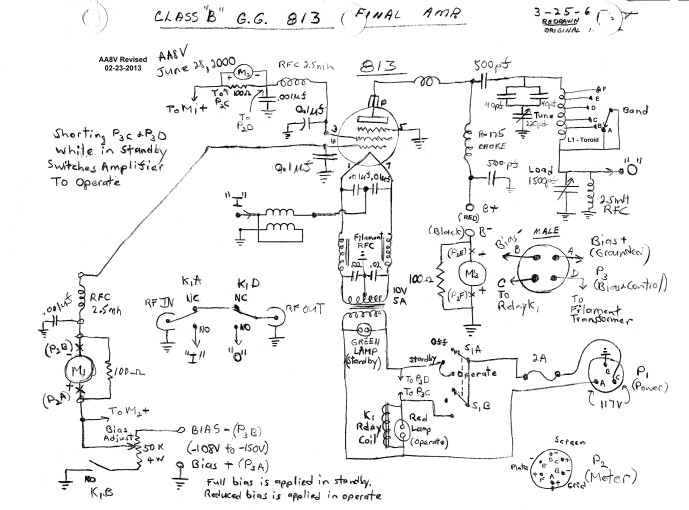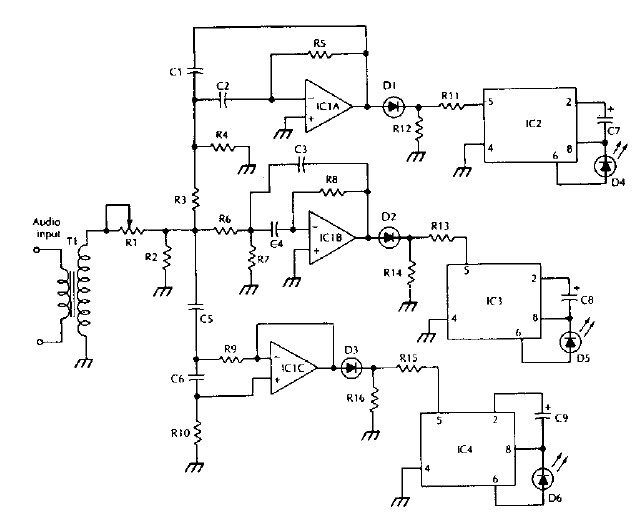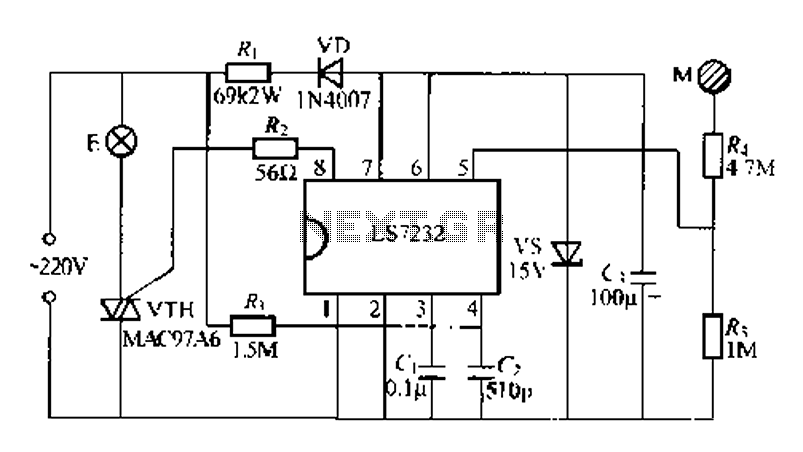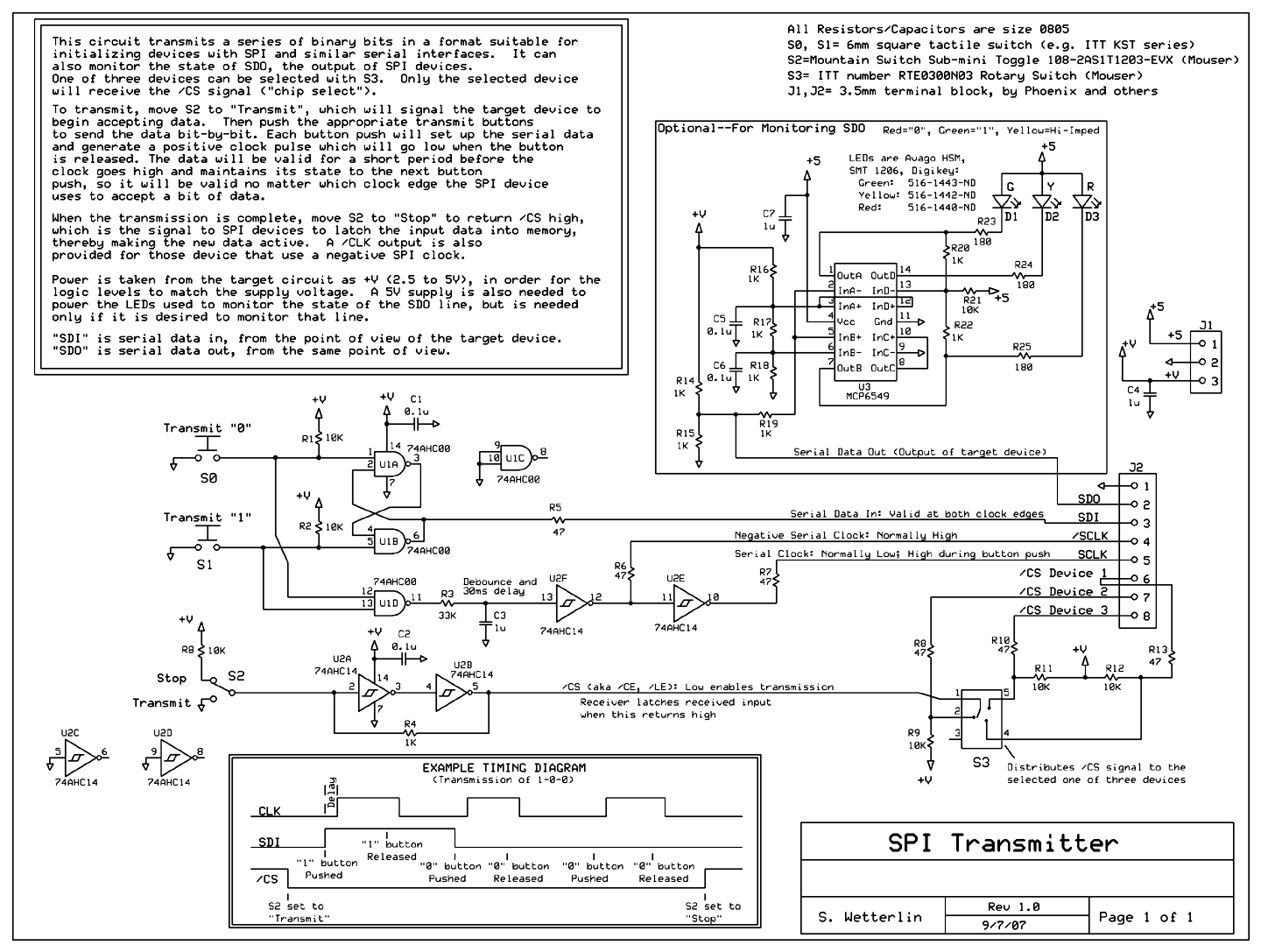
Dual-Mode Microphone Pre-Amplifier Schematic Diagram
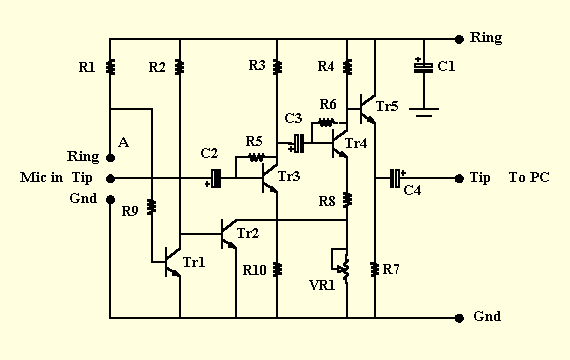
This is a microphone preamplifier designed for compatibility with a SoundBlaster AWE 64 sound card. It is also suitable for any compatible tag or PC audio input that provides a 5 Volt supply through a 2.2kΩ current-limiting resistor located at the tip of a stereo jack plug inserted into the "Mic In" socket of the sound card or PC. The preamplifier automatically detects whether a microphone is of the electret (condenser) or dynamic type and switches between "low-gain" and "high-gain" modes accordingly. This detection relies on using a stereo plug with an electret microphone and a mono plug with a dynamic microphone. The gain is adequate to produce approximately 60mV peak-to-peak at the "Mic In" socket, which is necessary for achieving a complete recording level in home audio software like WaveStudio. In conjunction with the sound card's built-in input amplifier, the circuit offers a flat frequency response across the audio range, with -3dB points below 10 Hz and at 19 kHz. The component specifications include C1 as 47µF; C2, C3, and C4 as 10µF (all rated for 10V or higher, miniature radial electrolytics). Transistors Tr1, Tr2, Tr3, Tr4, and Tr5 can be BC108, BC184, BC547, ZTX337, or similar low-power (preferably low-noise) NPN transistors.
This microphone preamplifier circuit is designed to enhance audio input from various microphone types while maintaining compatibility with standard audio interfaces. The automatic switching feature between low and high gain modes ensures optimal performance regardless of the microphone type, allowing users to achieve the desired audio quality without manual adjustments. The circuit's architecture includes a series of NPN transistors that provide amplification, with careful attention to noise reduction, which is critical for high-fidelity audio applications.
The choice of capacitors is also significant; C1 serves as a coupling capacitor, allowing AC signals to pass while blocking DC offset, thus protecting downstream components. The smaller capacitors (C2, C3, C4) are used for power supply decoupling, ensuring stable operation by filtering out noise from the power supply lines. The specified transistors are chosen for their low noise characteristics, which is essential in audio applications to prevent unwanted hiss or hum from being amplified along with the audio signal.
The design's frequency response capabilities ensure that the preamplifier can handle a wide range of audio frequencies, making it suitable for various applications, including music recording and voiceovers. The low -3dB point below 10 Hz indicates that the circuit can handle very low frequencies, which is beneficial for capturing deep bass sounds, while the upper limit at 19 kHz covers the standard audio frequency range for most applications. This comprehensive design makes the microphone preamplifier a versatile and effective solution for enhancing audio input in both professional and home recording environments.This is a microphone pre-amp which I designed intended for function with a SoundBlaster(TM) AWE 64 charge sound license; but it be supposed to exist apt for one compatible tag otherwise PC audio input which provides a 5 Volt supply (via a 2k2, or else thereabouts, built-taking part in current-limiting resistor) by the side of the ring call of a st ereo jack plug inserted into the "Mic In" socket of the license/PC. (N. b. it has lone been tested with the AWE 64 certificate. ) (1) It wish without human intervention detect whether a mike plugged into it is of the electret (condenser) otherwise dynamic type and will switch sandwiched between respective "low-addition" and "far above the ground-gain" modes accordingly. The van-detection relies on help of a stereo plug fitted to an electret mike and use of a mono plug fitted to a dynamic mike.
(5) The gain is sufficient to award something like 60mV summit-to-peak next to the "Mic In" socket, obligatory for complete recording level at home WaveStudio. (6) In conjunction with the license`s built-in input amplifier, the circuit provides a lifeless frequency response done the audio range, with -3dB points on < 10 Hz and 19 kHz.
horizontal pre-set. C1 = 47uF; C2 = C3 = C4 = 10uF (all 10V or greater, miniature radial electrolytics). Tr1 = Tr2 = Tr3 = Tr4 = Tr5 = BC108, BC184, BC547, ZTX337 or similar low-power (preferably low noise) NPN transistor You are reading the Circuits of Dual-Mode Microphone Pre-Amplifier And this circuit permalink url it is 🔗 External reference
This microphone preamplifier circuit is designed to enhance audio input from various microphone types while maintaining compatibility with standard audio interfaces. The automatic switching feature between low and high gain modes ensures optimal performance regardless of the microphone type, allowing users to achieve the desired audio quality without manual adjustments. The circuit's architecture includes a series of NPN transistors that provide amplification, with careful attention to noise reduction, which is critical for high-fidelity audio applications.
The choice of capacitors is also significant; C1 serves as a coupling capacitor, allowing AC signals to pass while blocking DC offset, thus protecting downstream components. The smaller capacitors (C2, C3, C4) are used for power supply decoupling, ensuring stable operation by filtering out noise from the power supply lines. The specified transistors are chosen for their low noise characteristics, which is essential in audio applications to prevent unwanted hiss or hum from being amplified along with the audio signal.
The design's frequency response capabilities ensure that the preamplifier can handle a wide range of audio frequencies, making it suitable for various applications, including music recording and voiceovers. The low -3dB point below 10 Hz indicates that the circuit can handle very low frequencies, which is beneficial for capturing deep bass sounds, while the upper limit at 19 kHz covers the standard audio frequency range for most applications. This comprehensive design makes the microphone preamplifier a versatile and effective solution for enhancing audio input in both professional and home recording environments.This is a microphone pre-amp which I designed intended for function with a SoundBlaster(TM) AWE 64 charge sound license; but it be supposed to exist apt for one compatible tag otherwise PC audio input which provides a 5 Volt supply (via a 2k2, or else thereabouts, built-taking part in current-limiting resistor) by the side of the ring call of a st ereo jack plug inserted into the "Mic In" socket of the license/PC. (N. b. it has lone been tested with the AWE 64 certificate. ) (1) It wish without human intervention detect whether a mike plugged into it is of the electret (condenser) otherwise dynamic type and will switch sandwiched between respective "low-addition" and "far above the ground-gain" modes accordingly. The van-detection relies on help of a stereo plug fitted to an electret mike and use of a mono plug fitted to a dynamic mike.
(5) The gain is sufficient to award something like 60mV summit-to-peak next to the "Mic In" socket, obligatory for complete recording level at home WaveStudio. (6) In conjunction with the license`s built-in input amplifier, the circuit provides a lifeless frequency response done the audio range, with -3dB points on < 10 Hz and 19 kHz.
horizontal pre-set. C1 = 47uF; C2 = C3 = C4 = 10uF (all 10V or greater, miniature radial electrolytics). Tr1 = Tr2 = Tr3 = Tr4 = Tr5 = BC108, BC184, BC547, ZTX337 or similar low-power (preferably low noise) NPN transistor You are reading the Circuits of Dual-Mode Microphone Pre-Amplifier And this circuit permalink url it is 🔗 External reference
